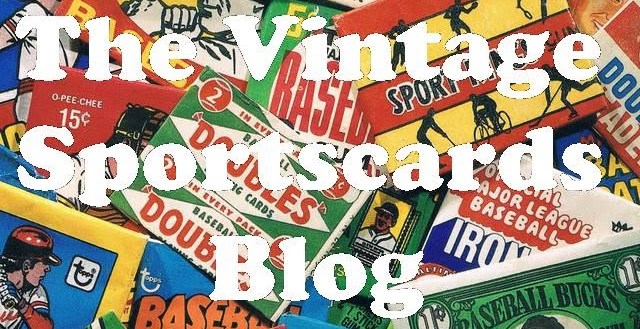Today this blog features some of the earliest hockey cards. They are tobacco cards from the same era when the T-series cards appeared. Unlike their American counterparts, however, these didn't have any brands advertised on them. I'm not sure if that was due to Canadian regulations; perhaps one of our friendly readers in that country can add a comment to explain.
What we now know as the National Hockey League wasn't organized until 1917. Before that, the main professional league was the National Hockey Association and it began play in 1910. Later that year, it is believed that this 36-card set appeared:
C56 Hockey #3 -- G. Roberts
Another thing that is different from most American-issued tobacco cards is the fact that these are numbered. Otherwise, they're the same size as the T206 and similar cards.
When Jefferson Burdick came up with his nomenclature for the
American Card Catalog, he lumped all of the Canadian-issued tobacco cards -- regardless of their sport -- into the C-series. The grouping
included one baseball series as well. Rather than using a specific date, he went by manufacturers when he knew them, by card size and by the set's subject. That's why the numbering system for the set from 1911-'12 might look odd at first:
C55 Hockey #20 -- Fred "Cyclone" Taylor
C55 was issued later but comes before the C56 set in Burdick's book simply because the banner on the back says "Hockey Players" and comes before "Hockey Series" alphabetically. There were 45 cards in the set, with one card having two variations.
One of the neat things in this set's design is the way it uses two hockey sticks to form part of the border. The player above is Fred "Cyclone" Taylor, one of the first professional hockey stars. Before Babe Ruth famously out-earned the President of the United States, Taylor earned more money than Canada's Prime Minister.
For 1912-'13, the "tobacco" era was largely over in the U.S., and in Canada the color was dropped from the cards:
C57 Hockey #46 -- Jack LaViolette
C57 is also the hardest of these three sets to complete, and ironically has the most cards. The complete set has 50 cards.
The storied Montreal Canadiens club was established during the NHA's tenure, as opposed to other clubs, which largely came from competing leagues. They were put together in order to have a French "alternative" that could interest hockey fans in Quebec as well. Since then, all the other teams around them came and went, but the "Habs" are still around today and have enjoyed long spells as a dominant club. And Jack LaViolette (shown above) was their leader and first coach.
The tobacco cards stopped there, as cigarettes largely migrated to using coupons and other premiums. As for the NHA, they were so affected by the conscription of players into the Army during World War One (which Canada entered in 1914) that there was a team made up entirely of players who'd enlisted in the Army. However, the thing that shut the league down was a money dispute. Several owners feuded with Toronto Shamrocks owner Eddie Livingstone and ended up forming the NHL in 1917 using the NHA as a framework.



















































